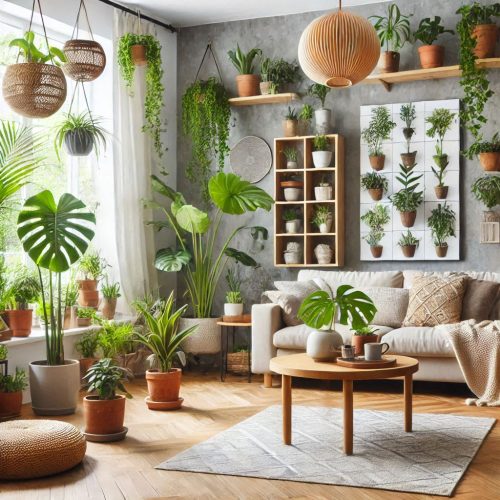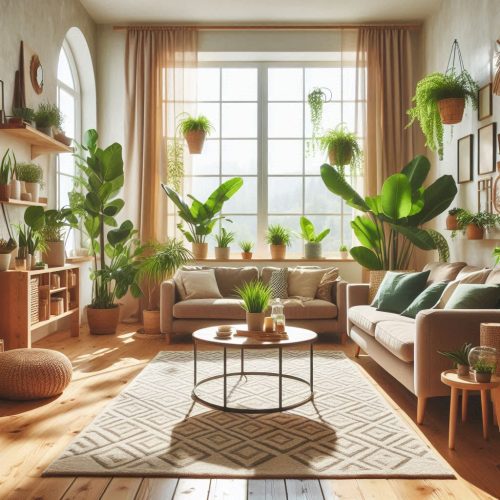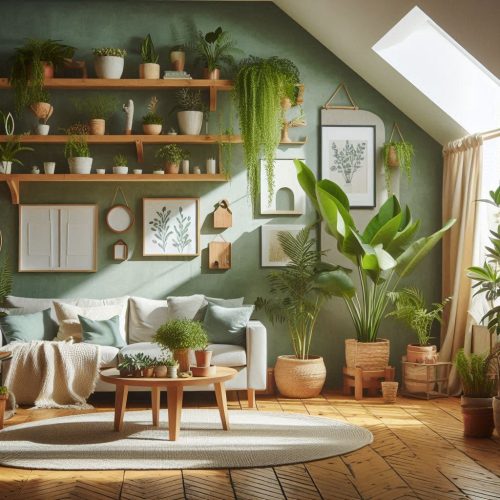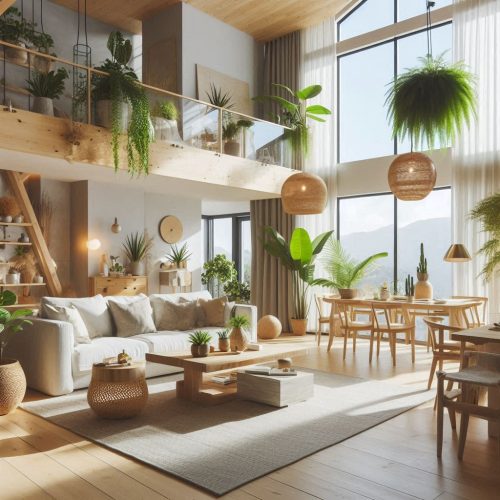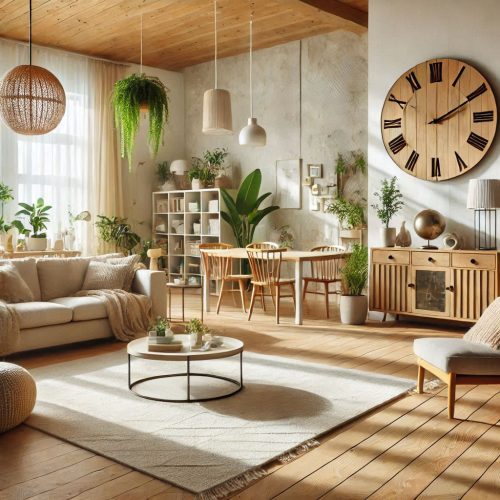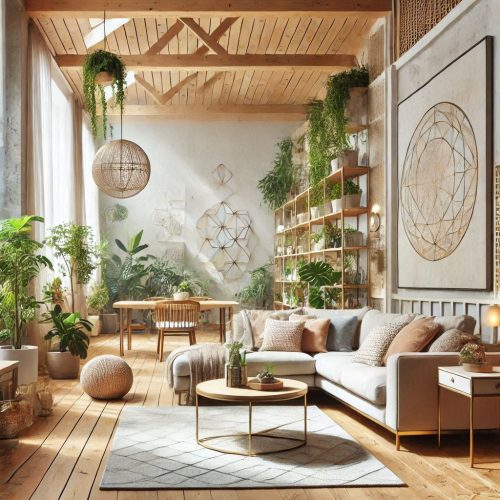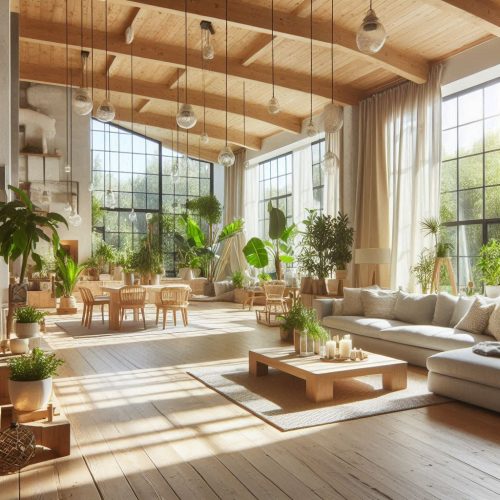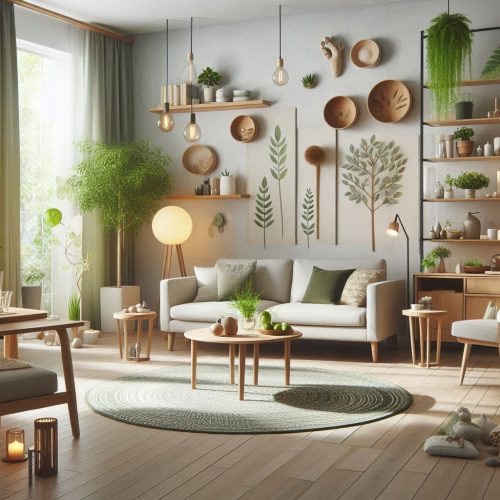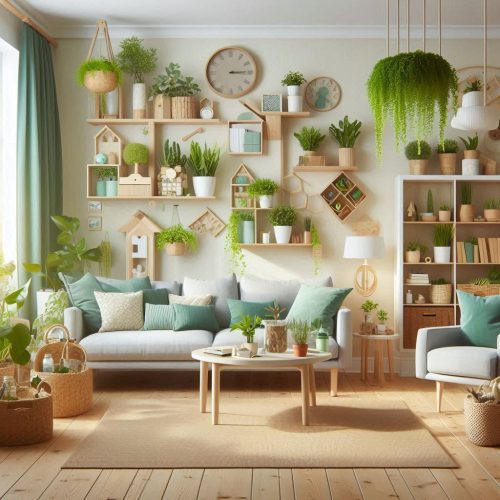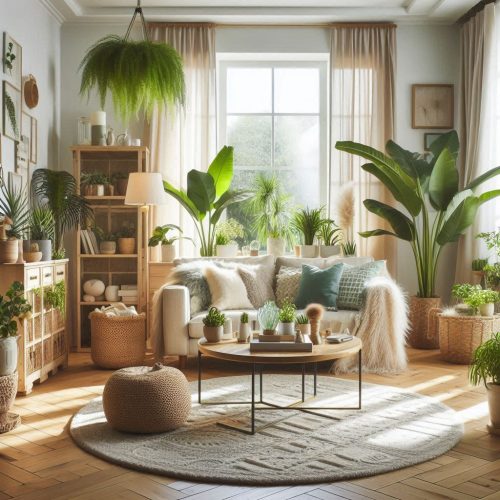In today’s world, where sustainability is becoming more and more important, many homeowners are looking for ways to make their living spaces both stylish and eco-friendly. The living room, often the heart of the home, is a great place to start when it comes to incorporating environmentally conscious design choices. From selecting sustainable furniture and energy-efficient appliances to using natural materials and minimizing waste, there are plenty of ways to create a greener living room without sacrificing style or comfort.
Why Go Eco-Friendly in Your Living Room?
The living room is a space where families spend a lot of time together, whether it’s watching movies, reading, or hosting guests. Making eco-friendly choices in this room not only reduces your carbon footprint but also creates a healthier environment for you and your family. Sustainable living room design can help conserve resources, reduce waste, and ensure that the furniture and décor you invest in have minimal environmental impact.
Here are some essential tips to help you create an eco-friendly living room:
1. Choose Sustainable Furniture
Furniture is one of the largest contributors to a living room’s environmental impact. When shopping for sofas, chairs, tables, and shelving units, look for pieces made from sustainable materials that are built to last.
- Wood: Opt for furniture made from reclaimed or FSC-certified wood. This ensures that the wood comes from responsibly managed forests that help conserve biodiversity and prevent deforestation. Reclaimed wood, which is salvaged from old buildings or other furniture, is also a great option because it reuses materials that would otherwise go to waste.
- Upholstery: Look for sofas and chairs upholstered in natural, organic fabrics such as organic cotton, linen, or hemp. These materials are produced without harmful chemicals and pesticides, making them safer for both the environment and your health. Avoid synthetic fabrics, such as polyester or acrylic, which are made from petroleum-based products and are not biodegradable.
- Non-toxic Finishes: Choose furniture that is finished with non-toxic paints, stains, or varnishes. Traditional finishes often contain harmful chemicals such as formaldehyde, which can off-gas and affect indoor air quality. Eco-friendly finishes are made from natural oils, waxes, or water-based paints, which are safer for your home and the planet.
2. Use Natural Materials for Décor
Incorporating natural materials into your living room design not only adds beauty and warmth but also helps reduce your environmental footprint.
- Stone and Clay: Materials like stone, clay, and concrete are natural, durable, and long-lasting options for your living room. Stone flooring, for example, is an excellent choice for an eco-friendly living room as it requires minimal maintenance and is highly durable. Clay tiles or natural stone countertops can be used for a more sustainable approach to hard surfaces.
- Recycled Materials: Consider incorporating décor items made from recycled materials such as glass, metal, or plastic. Recycled glass can be used in lighting fixtures, vases, or tabletops, while upcycled metal can be used in furniture and wall art. Recycled fabrics, such as those made from post-consumer waste like plastic bottles, can also be used for pillows and cushions.
- Bamboo: Bamboo is one of the most sustainable materials available. It grows quickly, requires minimal water, and doesn’t need pesticides. Bamboo furniture, flooring, or accents like blinds and throw rugs are excellent choices for an eco-friendly living room.
3. Maximize Natural Light and Ventilation
Natural light not only reduces the need for artificial lighting but also creates a healthier, more inviting atmosphere in your living room. Maximizing natural light helps to reduce energy consumption and can even improve your mood.
- Windows: Invest in energy-efficient windows with low-E coatings to minimize heat loss in the winter and heat gain in the summer. This reduces the need for heating and cooling, saving energy and reducing your utility bills.
- Sheer Curtains or Blinds: Opt for light-colored, sheer curtains or blinds that allow natural light to filter in. You can also use sustainable window coverings made from organic cotton or bamboo to enhance both the eco-friendliness and aesthetics of your living room.
- Indoor Plants: Not only do plants add a natural touch to your living room, but they also help purify the air. Indoor plants such as snake plants, peace lilies, and aloe vera can improve indoor air quality by absorbing carbon dioxide and releasing oxygen. They also help to regulate humidity, which can reduce the need for air conditioning.
4. Invest in Energy-Efficient Lighting
Lighting is an essential part of any living room, but it can also be a significant source of energy consumption if not done thoughtfully. Fortunately, there are several ways to make your lighting more eco-friendly:
- LED Bulbs: Replace traditional incandescent bulbs with energy-efficient LED bulbs. LEDs use up to 85% less energy than incandescent bulbs and last up to 25 times longer. This reduces both your energy consumption and the frequency with which you need to replace bulbs, saving money and resources in the long run.
- Smart Lighting: Consider investing in smart lighting systems that can be controlled remotely via your phone or voice commands. These systems allow you to adjust the brightness and turn lights off when not needed, reducing energy usage.
- Natural Light Integration: Make the most of daylight by positioning your seating and furniture to take advantage of windows and skylights. This can help reduce your reliance on artificial lighting during the day.
5. Reduce, Reuse, and Recycle
Reducing waste is a crucial part of creating an eco-friendly living room. Instead of constantly buying new décor or furniture, focus on reusing and repurposing items.
- Secondhand Furniture: Vintage or secondhand furniture is often made from high-quality, durable materials, making it a great choice for an eco-friendly living room. You can find unique, one-of-a-kind pieces that add character to your space while reducing demand for new production.
- DIY Projects: Repurpose old furniture or materials into new items for your living room. For example, you can turn an old bookshelf into a coffee table or use reclaimed wood to build a unique accent wall. DIY projects not only help reduce waste but also allow you to add a personal touch to your space.
- Eco-Friendly Waste Management: Be mindful of how you dispose of items. Recycle as much as possible, and donate or repurpose old furniture instead of sending it to the landfill. Opt for biodegradable cleaning products to maintain a green living space.
6. Go Green with Eco-Friendly Rugs and Textiles
When selecting rugs and textiles for your living room, look for sustainable options made from natural fibers like jute, sisal, hemp, or wool. These materials are biodegradable, renewable, and require less water and energy to produce compared to synthetic fibers.
- Wool Rugs: Wool is a natural, renewable fiber that is soft, durable, and naturally resistant to stains. Wool rugs can add warmth and texture to your living room while being more sustainable than synthetic alternatives.
- Hemp and Jute Rugs: These materials are incredibly eco-friendly, requiring little water or pesticides to grow. They also have a rustic, natural appearance that complements many eco-friendly living room designs.
7. Incorporate Eco-Friendly Art and Décor
Instead of purchasing mass-produced artwork or home accessories, choose eco-friendly pieces made from sustainable materials. Support local artists who use natural or recycled materials, or consider creating your own art from reclaimed items.
- Upcycled Art: Repurpose old items like scrap metal, wood, or fabric into art pieces for your living room. These upcycled works are not only environmentally friendly but also add a personal, unique touch to your space.
- Fair Trade Accessories: Look for accessories such as throw pillows, wall hangings, and vases that are made by artisans using fair trade practices and sustainable materials. Supporting fair trade ensures that artisans receive fair wages and work in safe conditions.
Conclusion
Creating an eco-friendly living room is all about making mindful choices that promote sustainability and reduce your environmental impact. By choosing sustainable furniture, maximizing natural light, using energy-efficient appliances, and incorporating natural materials, you can create a stylish, comfortable, and environmentally responsible living room.
The key to sustainable design is to prioritize quality over quantity, invest in durable items, and support ethical, eco-conscious brands. Whether you’re remodeling your entire living room or simply making small changes, every effort helps contribute to a greener, more sustainable future.

